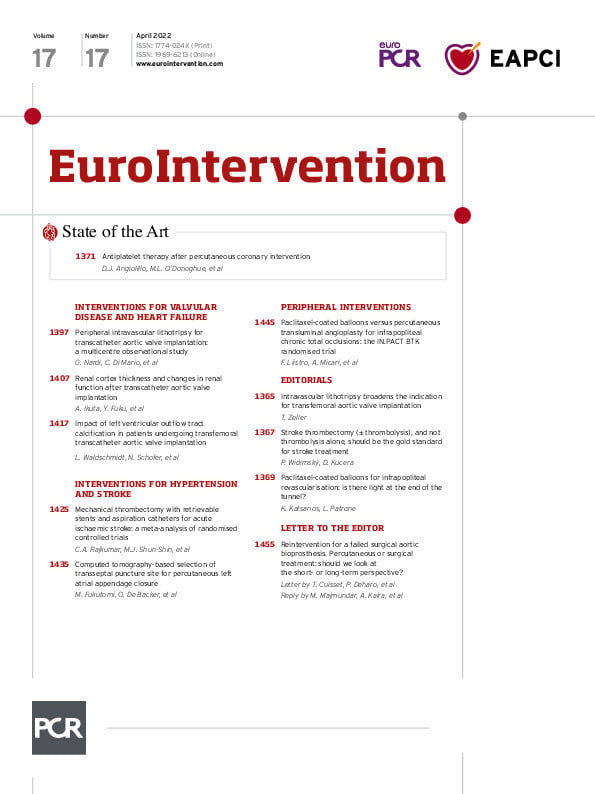We sincerely appreciate the commentary by T. Cuisset and colleagues, and their interest in our work1. We agree with the authors that valve-in-valve (ViV) transcatheter aortic valve implantation (TAVI) has better short-term outcomes than repeat surgical aortic valve replacement (SAVR) in patients with a failed aortic bioprosthesis, and there is a paucity of data on the long-term outcomes.
We assessed in-hospital outcomes and 30-day/6-month outcomes separately. Thirty-day/6-month outcomes were calculated from the day of discharge in patients who were discharged alive; they were not cumulative of in-hospital and post-discharge outcomes. However, the conclusion of better short-term outcomes in ViV TAVI remained the same as the study by Dehalo et al2.
Given the nature of the database, we could not analyse long-term outcomes using the Nationwide Readmission Database. Our post-discharge 6-month outcomes, such as mortality, major adverse cardiovascular events, and stroke, were not different between the two groups, similar to the study by Dehalo et al. However, all-cause readmission, heart failure hospitalisation, non-cardiac infection, and major bleeding/vascular complications were higher in the ViV TAVI group at six months after discharge. After including in-hospital events to the post-discharge six-month events, cumulative events for bleeding/vascular complication would be lower in ViV TAVI compared with repeat SAVR (661 [34.2%] vs 1,155 [68.1%], odds ratio 0.11, 95% confidence interval: 0.02-0.4; p-value=0.003). Regarding all-cause readmission, survived patients were elderly with a higher burden of comorbidities than repeat SAVR, which makes them at higher risk for readmission, even after adjustment. Hence, both studies12 reported better short-term outcomes and similar medium- to long-term outcomes in ViV TAVI compared with repeat SAVR.
We also agree that certain factors (i.e., heart failure, atrial fibrillation, chronic kidney disease, chronic lung disease, fluid/electrolyte imbalance, and diabetes) increase the risk of worse outcomes for reintervention. Hence, these subgroups would benefit from closer perioperative workup, post-discharge follow-up, and better valve design.
We conclude that ViV TAVI can be performed safely in carefully selected patients. The choice between the two interventions should be a shared decision based on the available expertise, the individual patient, and valve characteristics until randomised data with longer follow-up shed more light on the long-term clinical outcomes in this patient subset. A randomised study comparing these two reinterventions (ViV TAVI vs repeat SAVR) is the need of the hour.
Conflict of interest statement
A. Kalra is the Chief Executive Officer and Creative Direcor of makeadent.org. None of the other authors have any conflicts of interest or relevant disclosures.
Supplementary data
To read the full content of this article, please download the PDF.

